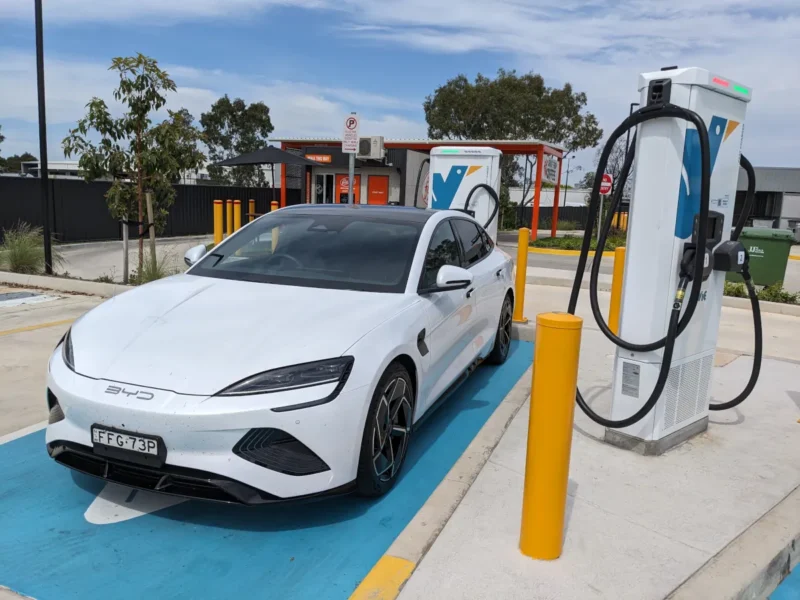Recently I attended the All Energy Australia conference and exhibition in Melbourne, a fantastic event covering all aspects of the energy industry with a focus on solar, batteries, inverters and EV charging. It was also a chance to spend time with several of The Driven and Renew Economy team members in person.
Rather than fly between Sydney and Melbourne, I thought it was a great opportunity for me to thoroughly test out the BYD Seal by taking one on a long road trip. The Seal is BYD’s best selling fully electric model, and currently Australia’s third best selling EV behind Tesla Model Y and Model 3.
The trip was off to a good start, until the first charging stop when I plugged into the Tesla Supercharger at Yass, one of the recently upgraded V4 locations that is open to non-Tesla EVs. I tried multiple stalls to no avail, but the charger and car would simply not recognise each other.
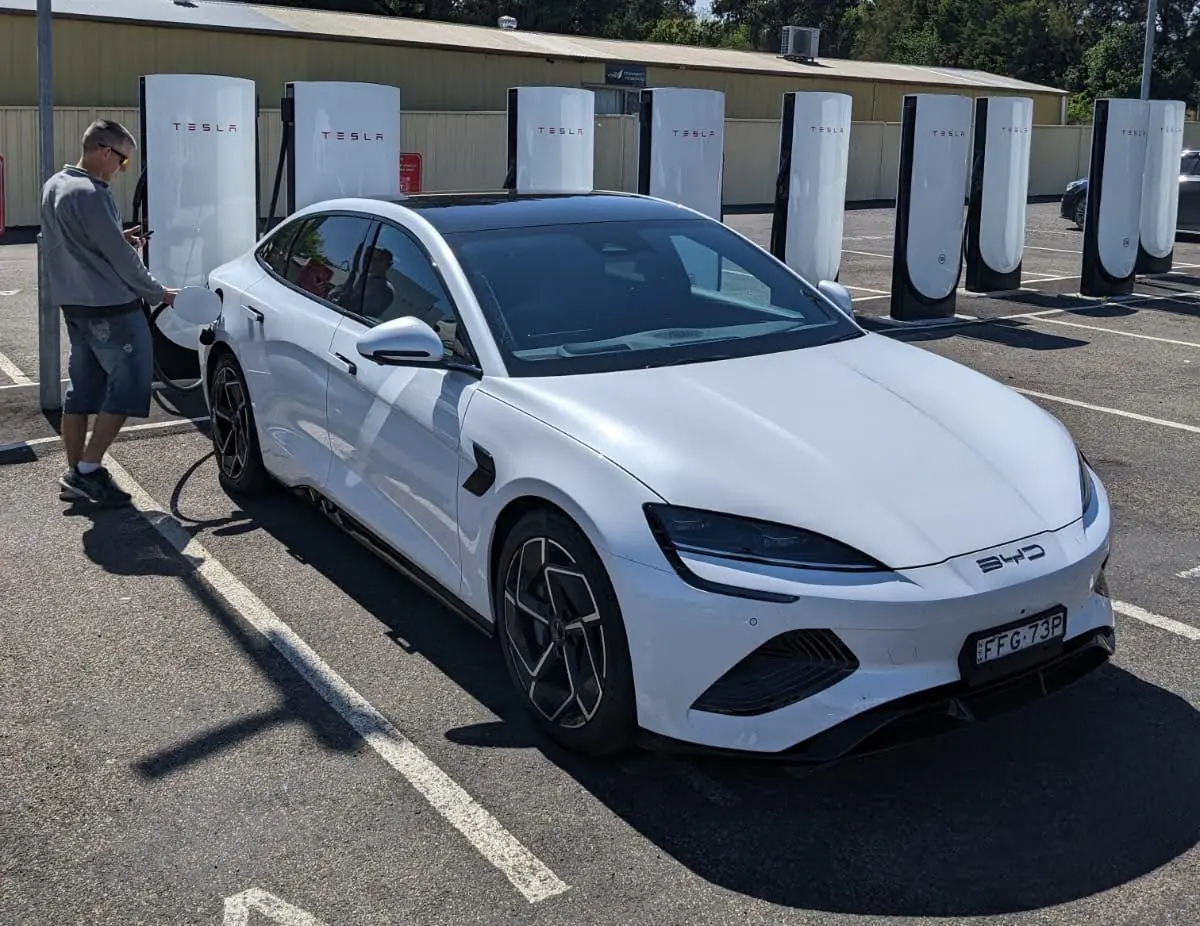
I was aware of earlier BYD Atto 3 and Seal vehicles having issues with Tesla V3 or V4 Superchargers, although had incorrectly assumed this BYD press car would already have the fix applied. BYD Dolphin does not have the same issue, neither do 2024 model year Atto 3s or Seals built after March 2024.
More details of the issue and BYD’s fix can be found here in BYD Seal successfully charges at Tesla V3 and V4 superchargers article from June 2024. Unfortunately, it appears BYD will not be applying this fix to approximately 10,000 older 2023 Atto 3 vehicles based on BYD’s response to a NSW Fair Trading complaint made by an owner.
At this point we still had enough charge to continue further, but the NRMA charger a block away was free so my friend Sunny and I decided to plug in there and try one of the local cafes. A cup of coffee and about 35 minutes later we set off for the next charging stop, knowing that we could not make use of the Tesla network.
Apart from a slow maximum speed of only 36 kW at Chargefox Euroa, the remainder of the journey to Melbourne went fairly smoothly. The whole trip down took us roughly 11.5 hours including charging stops and we arrived feeling refreshed and in time for dinner.
However, the return journey was a different story as it took nearly 14 hours and my patience was starting to wear thin by the end of it. I have written a separate story with more details about the charging issues we experienced and how I realised I was living in a Tesla charging bubble.
Comfortable seats and interior
After spending more than 24 hours in the BYD Seal Premium throughout the entire road trip I got a pretty good feel for the interior and thankfully it is very comfortable. The seats are genuine leather in both the Seal Premium and Performance variants, and also come equipped with front seat heating and ventilation even in the base Dynamic.
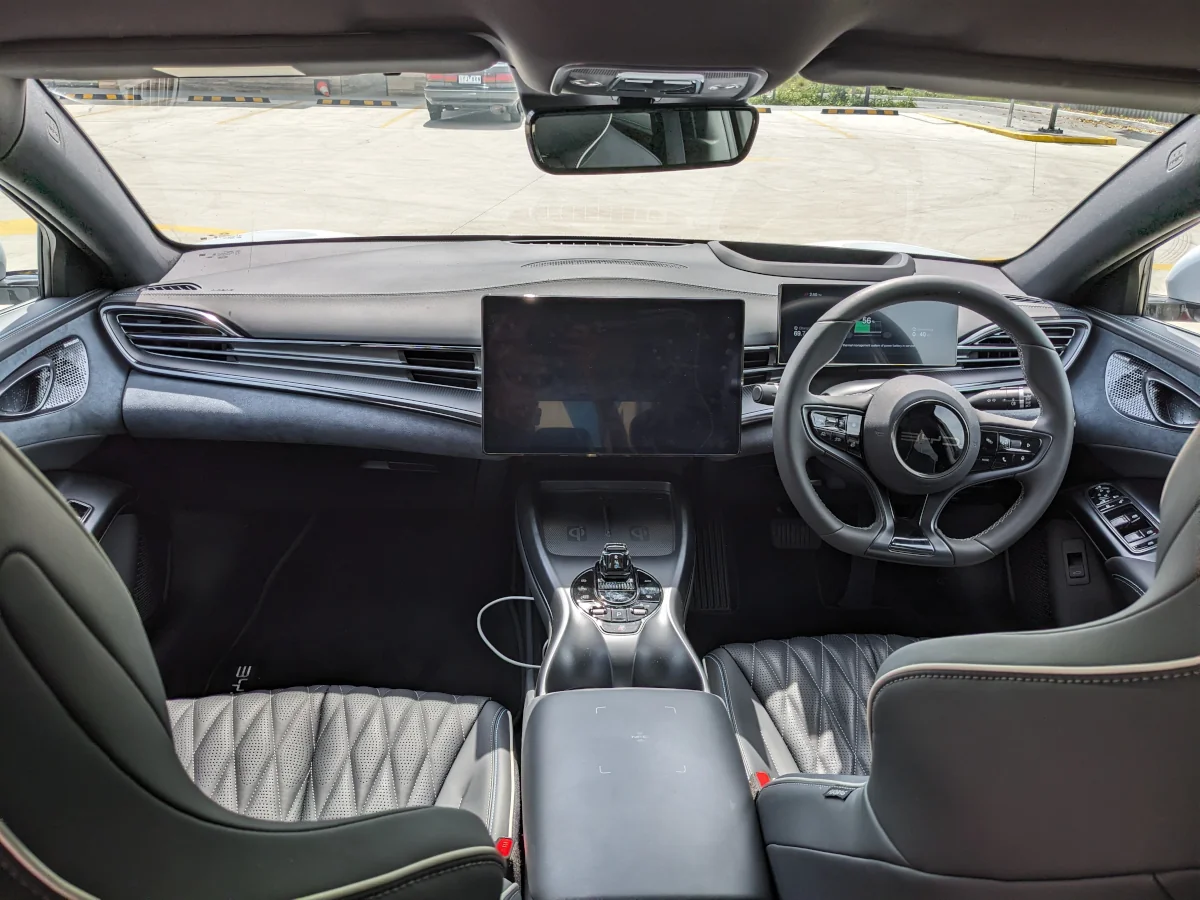
The seats offer plenty of adjustment so it is easy to get into a comfortable position or make changes as you drive. I also found the centre console lid and armrest on the doors were soft enough so you don’t get sore spots on your arms or elbows even after hours of driving.
Infotainment generally works well in the Seal although the large central touchscreen sometimes needed multiple presses to register. It can be fiddly to adjust climate settings as everything is controlled using the screen, including a counterintuitive interface for moving the air vents.
BYD has tried to copy Tesla’s approach here, but not executed it well in my opinion. This issue is compounded by Android Auto or Apple CarPlay taking up the entire central screen which looks great, although forces you to swipe or touch the screen several times to switch between the built-in car controls and your navigation or music from the phone.
Cruisy rather than sporty dynamics
BYD has tuned the Seal to be more of a comfortable cruiser than a sports sedan which isn’t necessarily a bad thing. For example, the seats have side support but don’t feel like they really keep you snug while cornering. Acceleration feels sluggish in normal mode but is decent once you engage sport mode.
The Seal suspension also lends itself to a cruisy rather than sporty vibe as it errs towards the softer side, riding over bumps nicely and providing good insulation on rougher sections of highway. Comparing suspension with other electric sedans, the Seal felt softer than my old Model 3 or a Polestar 2 but less refined and balanced than the refreshed Model 3.
I have not driven the Seal Performance though, which on paper delivers nearly double the power and torque as well as frequency selective damping shock absorbers. So if you’re after something more sporty, the Performance variant would be worth test driving.
Good driver assistance systems, apart from one flaw
Adaptive or Intelligent Cruise Control as BYD calls it functions as expected on the highway, keeping the Seal at your chosen distance behind other cars without slowing down too abruptly when cars inevitably pull in front if you too soon after overtaking.
Automatic lane centering also works fairly well, keeping the Seal on track while allowing some steering input without disengaging to avoid objects on the road or give trucks a wide berth when overtaking. These two systems combined make the Seal easy to drive long distances without having to focus on the minutiae that can cause tiredness.
While using these systems, the Seal detects your hands on the wheel using steering wheel torque, meaning it occasionally reminds you to gently tug on the wheel. However, if you miss the first reminder the lane centering automatically turns off which is not only surprising, but could be dangerous in a medical emergency as the cruise control remains active.
A better solution for this situation would be to keep lane centering active, signal the driver with something more intrusive to catch their attention and eventually slow down and pull over safely if there is still no response.
Efficiency is a strong point
It was hard to get an exact energy consumption figure for the whole trip because the driver’s display only offers an efficiency figure for the past 50 km, or a cumulative figure which I assumed is for the life of the car or since the last charge. It’s not clear exactly what it refers to and the owner’s manual does not help.
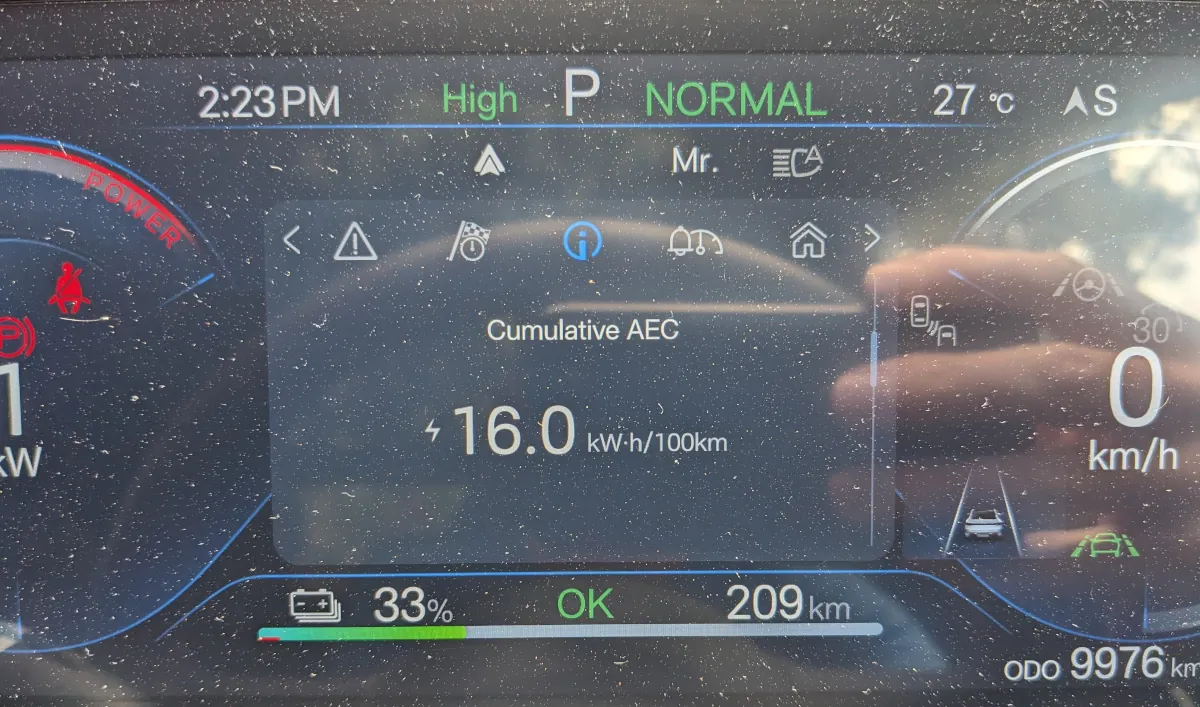
Either way, the cumulative figure read 16.0 kWh/100 km at the end of my week with the car. Over the last 50 km of driving mainly spent around town the car showed 14.2 kWh/100 km. One more data point is that the Seal consumed 54% of its battery on the last leg of the trip home between Yass and Sydney, covering a distance of 283 km.
Whichever way you look at it these consumption figures are impressive, indicating a real world range close to the 570 km WLTP figure is achievable especially around town.
Final thoughts
Overall, I think the BYD Seal is a great choice if you are looking for a fully electric sedan. As well as being a comfortable and efficient car, the Seal has a striking exterior design with interesting details such as the front daytime running lights and full width taillight.
There are some downsides though, boot space in the Seal is smaller and shallower than a Model 3 and less practical than Polestar 2. There is no one pedal driving mode as regenerative braking via the accelerator pedal is fairly weak even in the strongest setting, at least it remembers settings such as drive mode though.
If you plan on taking your BYD Seal on long road trips and have not had the Tesla Supercharger fix applied yet, I would suggest asking BYD about this at your next service appointment as this gives you access to more charging options if you need them.
Also see Bryce Gaton’s review of the BYD Seal from June 2024:
BYD Seal lays down challenge to Model 3, but it is more likely to be a Camry killer
Charging session details
In case anyone is interested, I have compiled details of all charging sessions for my entire trip below. I started the Melbourne to Sydney leg with only 30% state of charge, hence the first stop in Fitzroy North before getting on the highway. This also explains the extra 35 kWh of energy needed for the return trip.
There are two sessions at Chargefox Euroa because I moved to a different charger to try and improve the speed. More details on the issues I had with slow or broken chargers on my trip can be found in a separate story here:
I was living in a Tesla charging bubble
Sydney to Melbourne
| Stop | Charger | Duration (mm:ss) | Energy (kWh) | Average Speed (kW) | Cost |
| 1 | NRMA Yass | 37:41 | 26.85 | 42.76 | $17.72 |
| 2 | Evie Wodonga Carl’s Junior | 35:19 | 56.70 | 96.33 | $41.96 |
| 3 | Chargefox Euroa 1 of 2 | 16:00 | 9.60 | 36 | $4.32 |
| Chargefox Euroa 2 of 2 | 42:00 | 22.64 | 32.34 | $10.19 | |
| Total | 131:00 | 115.79 | $74.19 |
Melbourne to Sydney
| Stop | Charger | Duration (mm:ss) | Energy (kWh) | Average Speed (kW) | Cost |
| 1 | Evie North Fitzroy | 46:02 | 38.06 | 49.6 | $22.07 |
| 2 | BP Pulse Glenrowan | 21:56 | 17.58 | 48.09 | $11.43 |
| 3 | Chargefox Barnawartha North | 13:00 | 8.03 | 37.06 | $3.61 |
| 4 | Evie Wodonga Hume St | 65:45 | 52.31 | 47.74 | $33.48 |
| 5 | NRMA Yass | 50:34 | 34.29 | 40.68 | $22.63 |
| Total | 197:17 | 150.27 | $93.22 |
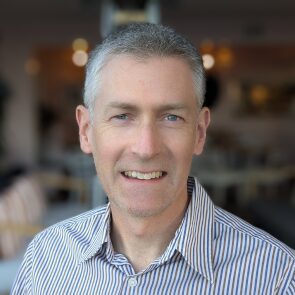
Tim has 20 years experience in the IT industry including 14 years as a network engineer and site reliability engineer at Google Australia. He is an EV and renewable energy enthusiast who is most passionate about helping people understand and adopt these technologies.

